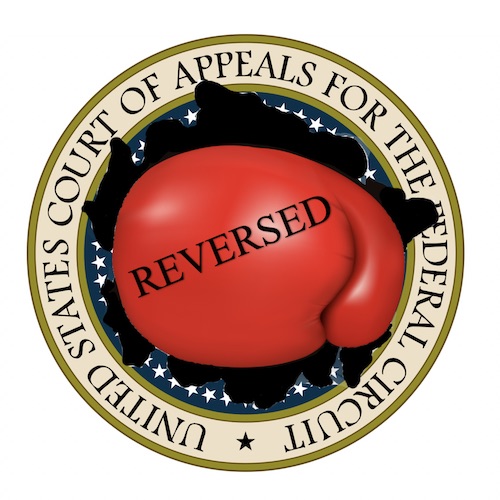“The CAFC concluded that the claim language was not plain and that the proper interpretation could be determined by the specification and the prosecution history.”
 On June 13, the U.S. Court of Appeals for the Federal Circuit (CAFC) reversed in part, vacated in part, and remanded a decision by the United States District Court for the District of Delaware relating to the University of Massachusetts’ (UMass’) suit against L’Oréal S.A. and its American subsidiary L’Oréal USA, Inc. (collectively, L’Oréal), alleging patent infringement of both U.S Patent No. 6,423,327 (the ‘327 patent) and U.S. Patent No. 6,645,513 (the ‘513 patent). The district court held that it lacked personal jurisdiction over L’Oréal S.A. and that the patents were invalid based on indefiniteness. UMass on appeal challenged both of the district court’s holdings, arguing that they were entitled to jurisdictional discovery against L’Oréal S.A. and that the claim construction performed by the district court was improper.
On June 13, the U.S. Court of Appeals for the Federal Circuit (CAFC) reversed in part, vacated in part, and remanded a decision by the United States District Court for the District of Delaware relating to the University of Massachusetts’ (UMass’) suit against L’Oréal S.A. and its American subsidiary L’Oréal USA, Inc. (collectively, L’Oréal), alleging patent infringement of both U.S Patent No. 6,423,327 (the ‘327 patent) and U.S. Patent No. 6,645,513 (the ‘513 patent). The district court held that it lacked personal jurisdiction over L’Oréal S.A. and that the patents were invalid based on indefiniteness. UMass on appeal challenged both of the district court’s holdings, arguing that they were entitled to jurisdictional discovery against L’Oréal S.A. and that the claim construction performed by the district court was improper.
Procedural History
The specification for the ‘327 patent and ‘513 patent, which are materially identical, outline that the human skin includes a surface layer and deeper layer called the dermis which consists of a variety of dermal cell types and proteins, such as collagen and elastin. Both patents describe a method of “enhancing the conditions of non-diseased skin by topical application of compositions containing a naturally occurring nucleoside.” In June of 2017, UMass filed a suit against L’Oréal alleging infringement of the ‘327 and ‘513 patents. L’Oréal S.A. filed a motion asking to be dismissed from the case on the grounds that the court lacked personal jurisdiction over it. UMass responded arguing that they are entitled to discovery related to personal jurisdiction.
In March 2018, L’Oréal U.S.A. filed a petition for an inter partes review of both patents, which the Patent Trial and Appeal Board (PTAB) denied. The PTAB in their denial construed claim 1 to require “’the adenosine concentration applied to the dermal cells’ have a molar concentration within a specified range” and adopted UMass’s claim construction. The PTAB did not further define the concentrations of the claim and did not require further claim construction meaning that the determinations by the PTAB were final and non-appealable.
In November 2018, the district court granted L’Oréal S.A.’s motion and dismissed them from the suit. Thereafter, L’Oréal USA requested that the district court construe the wherein clause of the claim, which reached the same conclusion as the PTAB stating the wherein clause “has its plain and ordinary meaning without the need for further construction.” In September 2020, L’Oréal USA moved for summary judgment, focusing on the claim language preceding the wherein clause, the skin-enhancement clause, on the grounds that the wherein clause would be indefinite if the court maintained its earlier ruling on the construction of the wherein clause, and additionally concluded that the recited concentration range in the wherein clause does not form the adenosine concentration in the composition topically applied to the skin in the wherein clause. In April 2021, the district court granted L’Oréal USA’s motion for summary judgment and entered in its final judgment of invalidity of the claims of the ‘327 and ‘513 patent.
Claim Language
UMass first challenge the district court’s determination that the claims were indefinite. UMass’s argument and the district court’s ruling on indefiniteness rely on the dispute over the claim construction, and more particularly the wherein clause. UMass insisted that the “concentration” in the wherein clause is the concentration of adenosine in the dermis layer of the skin after it has entered the dermis. The CAFC first examined this argument and rejected UMass’s view, but also concluded that the district court erred.
The CAFC concluded that the claim language was not plain and that the proper interpretation could be determined by the specification and the prosecution history. The court noted that the relevant claim language, when viewed in the context of the whole claim, is not plain when examined on its face. The CAFC outlined that the language points against UMass’s view, as evidenced by various uncertainties and indicators.
The court found that the proper starting point was the fact relied on by both the PTAB and the district court: The wherein clause refers to “the adenosine concentration applied to the dermal cell,” while the preceding skin-enhancement clause refers to “topically applying to the skin a composition comprising a concentration of adenosine.” The CAFC found that the contrast in the object was suggestive of a difference in the variants of the same verb. This difference only served as a starting point for the court and allowed the court to dismiss UMass’s argument as the language immediately complicates the picture.
The CAFC found that the language of the wherein clause positively suggests a link between the two clauses at issue. The wherein clause refers to “the adenosine concentration,” which invokes an antecedent for repeating the claim’s prior reference to a concentration of adenosine. UMass’s view regarding the wherein clause referred to something that had no presence before application of the solution. Using the district court’s construction, UMass’s expert conducted testing on L’Oréal’s products to determine the concentration in the dermis of the adenosine. The methodology of UMass’s expert calls for an interpretation that would need the wherein clause to be rewritten, further showing UMass’s asserted meaning is not plain.
CAFC’s Claim Construction
The court next worked to conclude how the claim should be constructed based on the specification and prosecution history. The patents describe multiple embodiments, none of which reference a specific numerical molar concentration for the measured concentration in the dermis. The CAFC found significant evidence that this concentration should be read to the amount applied to the surface of the skin. UMass argued that the specification supported their contrary construction but did not show where the specification contemplated their construction. The specification does recognize that dermal cells are contained in both the dermis and epidermis and when the solution is applied to the skin, not all the adenosine penetrates the dermis because of the epidermis. The CAFC found support within the claim supporting measurement of the adenosine after exposure to the cells as opposed to before application.
The CAFC found the strongest support for their claim construction in the prosecution history. When overcoming a prior-art rejection, UMass altered the wording to read the range in concentration. The court noted that most importantly:
“[I]n describing the amendment to the examiner in the office action response, applicants implied that this new wording changed nothing about where the concentration was to be measured. Applicants remarked: ‘This amendment would add no new matter, as it merely includes a range of concentrations of adenosine recited in dependent claims.’”
The court held that the prosecution history requires their construction of the claim and UMass’s counterarguments were all unavailing and unpersuasive. The CAFC noted that “this is not a case where the prosecution history must meet the standard of clear and unmistakable disclaimer for overcoming an otherwise plain meaning” because the meaning of the relevant claim language is ambiguous. The subsequent new construction by the CAFC resulted in the district court’s indefiniteness ruling being vacated and remanded for further proceedings.
Personal Jurisdiction Determination
The CAFC concluded by examining UMass’s challenge to the district court’s ruling on personal jurisdiction. They determined that UMass at the very least was entitled to jurisdictional discovery. Personal jurisdiction analysis is governed by Federal Circuit law, which has held that jurisdictional discovery should be allowed unless the plaintiff is being frivolous. The court found the district court abused its discretion in not allowing jurisdictional discovery.
Image Source: Deposit Photos
Author: almoond
Image ID: 10042948
This article was updated on June 16 for clarity.

![[IPWatchdog Logo]](https://ipwatchdog.com/wp-content/themes/IPWatchdog%20-%202023/assets/images/temp/logo-small@2x.png)

![[Advertisement]](https://ipwatchdog.com/wp-content/uploads/2024/03/IP-Copilot-Apr-16-2024-sidebar-700x500-scaled-1.jpeg)
![[Advertisement]](https://ipwatchdog.com/wp-content/uploads/2024/04/Patent-Litigation-Masters-2024-sidebar-early-bird-ends-Apr-21-last-chance-700x500-1.jpg)

![[Advertisement]](https://ipwatchdog.com/wp-content/uploads/2021/12/WEBINAR-336-x-280-px.png)
![[Advertisement]](https://ipwatchdog.com/wp-content/uploads/2021/12/2021-Patent-Practice-on-Demand-recorded-Feb-2021-336-x-280.jpg)
![[Advertisement]](https://ipwatchdog.com/wp-content/uploads/2021/12/Ad-4-The-Invent-Patent-System™.png)







Join the Discussion
2 comments so far.
Eileen McDermott
June 16, 2022 08:03 amThanks Anon, I’ve updated the article for clarity.
Anon
June 15, 2022 04:47 pmOne (minor quibble):
This statement is in error: “The CAFC found that the prosecution history did not need to meet the standard of clear and unmistakable disclaimer to overcome an otherwise plain meaning.”
The CAFC expressly states that “plain meaning” was NOT in play here. See page 8 of the decision:
“We first conclude that the relevant claim language, especially when viewed in the context of the whole claim, is not plain on its face, much less plain in supporting UMass’s interpretation of it. See IGT v. Bally Gaming Int’l, Inc., 659 F.3d 1109, 1117 (Fed. Cir. 2011) (“Extracting a single word from a claim divorced from the surrounding limitations can
lead construction astray.”). The language contains evident uncertainties and indicators pointing against UMass’s view.“